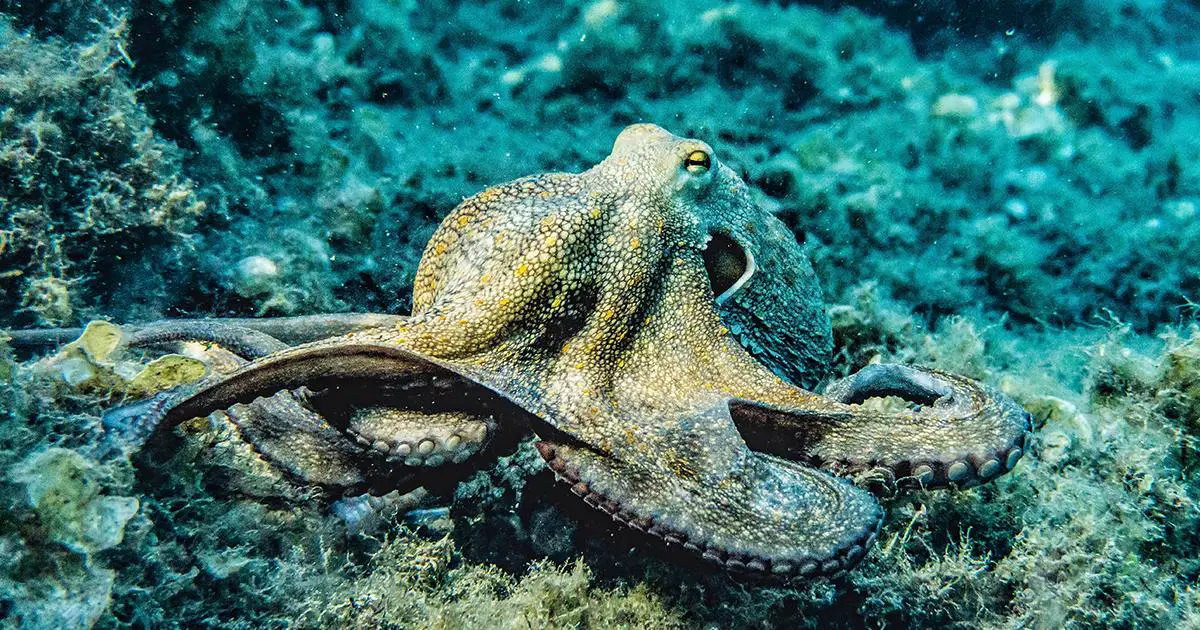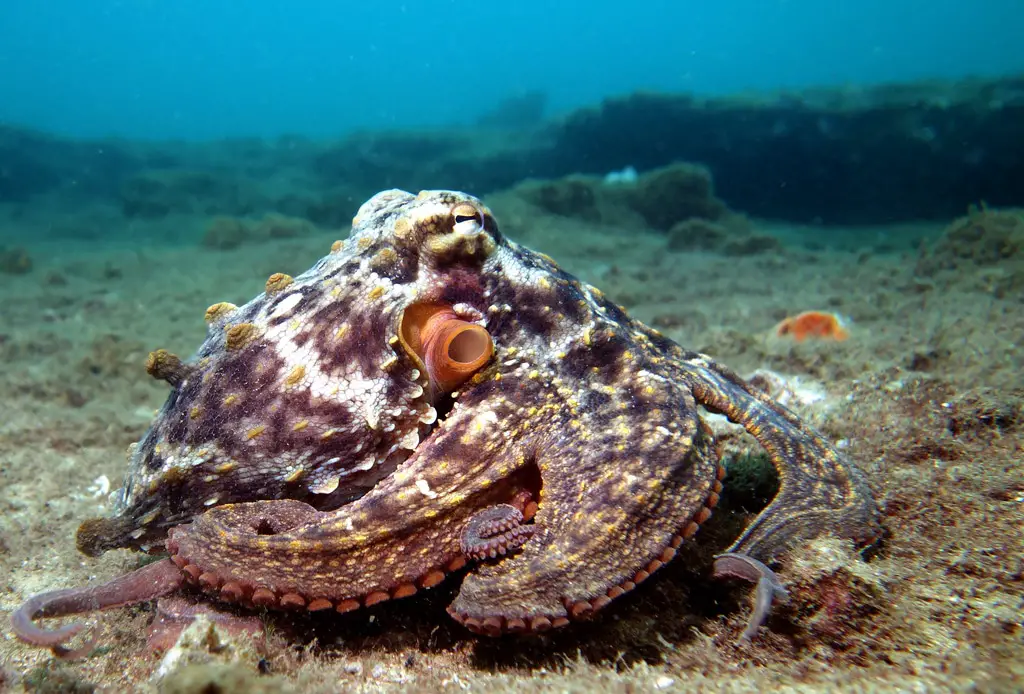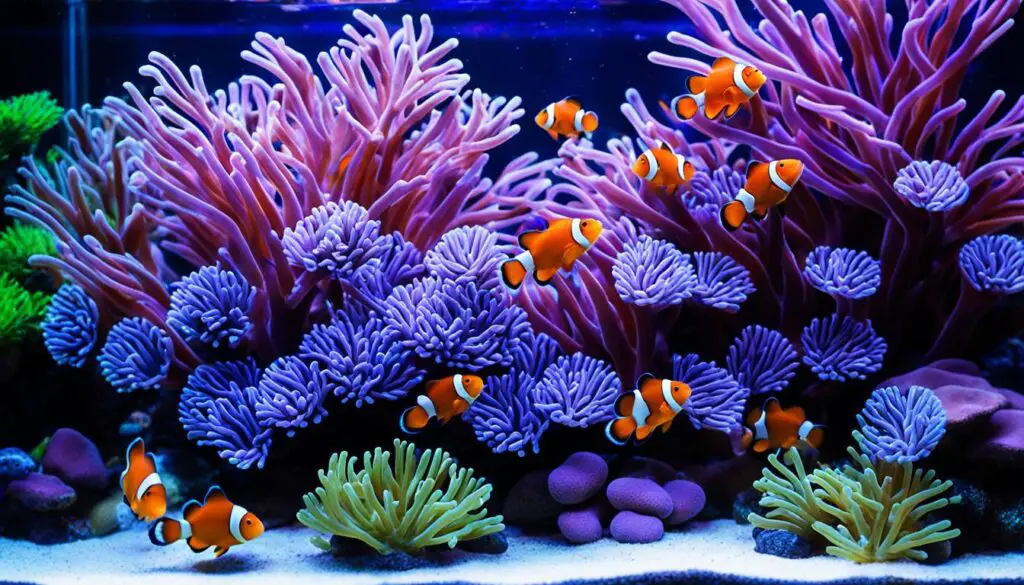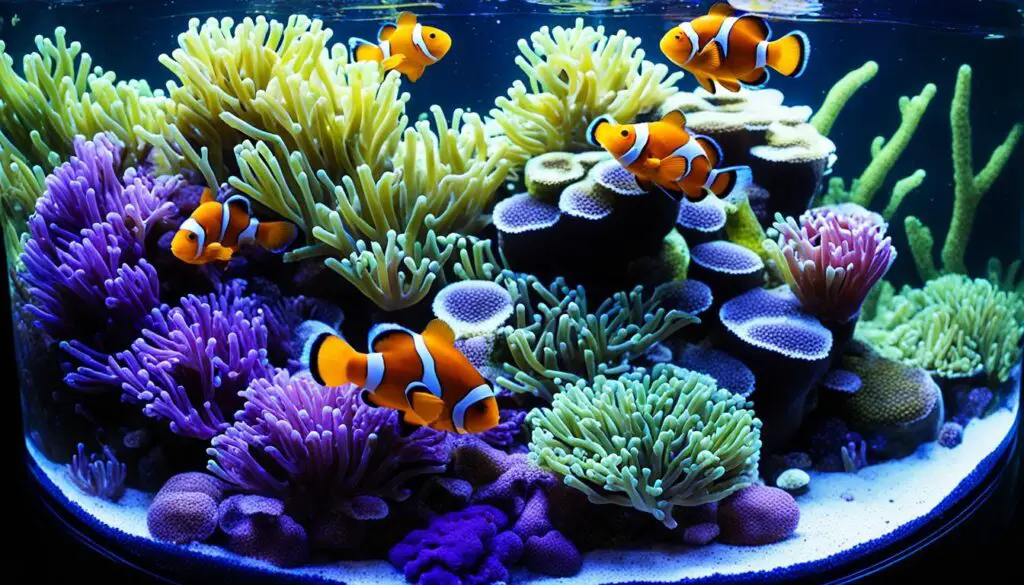Can All Octopus Change Color

Introduction
Can All Octopus Change Color: The octopus, with its mesmerising ability to change color and texture in the blink of an eye, has long captured the imagination of scientists and the public alike. Often hailed as the masters of camouflage, these enigmatic creatures have fascinated marine biologists for centuries. The question that has perplexed researchers is whether all octopuses possess the same remarkable color-changing capabilities.
Octopuses are celebrated for their cryptic coloration, a skill that helps them evade predators, stalk prey, and communicate with one another. This exploration delves into the diverse octopus family tree, considering factors such as habitat, behavior, and evolutionary history to uncover the truth about the universality of their astonishing camouflage capabilities.
Join us on a journey through the depths of the ocean to uncover the secrets of these incredible creatures. In this quest for knowledge, we aim to determine if all octopuses are equal masters of disguise or if their talents vary in ways that reveal the intricate tapestry of nature’s adaptations.

Can octopus change to any color?
They can change not only their coloring, but also the texture of their skin to match rocks, corals and other items nearby. They do this by controlling the size of projections on their skin (called papillae), creating textures ranging from small bumps to tall spikes.
Octopuses are renowned for their remarkable ability to change color, but can they truly transform into any hue they desire? While octopuses possess an impressive range of colors and patterns at their disposal, their color-changing capabilities are not boundless. Instead, their ability to change color is a complex interplay of specialized skin cells called chromatophores, reflective iridophores, and muscle contractions.
Octopuses primarily use chromatophores, which contain pigments of various colors, to achieve their vibrant transformations. These chromatophores can expand or contract to expose or hide specific colors, allowing octopuses to create intricate patterns and hues, often to blend in with their surroundings, communicate with each other, or signal their emotions.
While octopuses can produce an impressive array of colors and patterns, they are not capable of mimicking every color in the spectrum with perfect accuracy. Their color-changing abilities are limited to the range of pigments they possess and their environment’s influence. Octopuses are highly adaptable, but their transformations are essentially a blend of the colors available to them, making them masters of camouflage within their ecological niches but not artists with an unrestricted palette.
Can all octopuses camouflage?
(There are around 300 species of octopus in the order Octopoda. In this article, the term ‘octopuses’ is used to describe general trends throughout the group, but not every species is capable of changing color, and the camouflaging mechanics they use can vary.)
The ability to camouflage is a defining characteristic of octopuses, but not all octopus species exhibit the same level of proficiency in this art of disguise. While octopuses are renowned for their camouflaging skills, the extent to which they can effectively blend into their surroundings can vary significantly among different species.
Some octopuses, like the common octopus (Octopus vulgaris), are considered masters of camouflage. They possess a wide range of specialized skin cells called chromatophores, which allow them to change color, texture, and even pattern rapidly and with remarkable precision. These octopuses can seamlessly merge with their environment, making them virtually invisible to predators and prey alike.
However, not all octopus species have evolved to be as adept at camouflage. Some, like the deep-sea-dwelling dumbo octopus, live in environments where camouflage may not be as critical due to the scarcity of visual predators. Consequently, their camouflage abilities may not be as highly developed as those of their shallow-water relatives.
While the majority of octopus species possess some degree of camouflaging ability, the effectiveness of their camouflage varies depending on their ecological niche and the evolutionary pressures they face. Thus, the world of octopus camouflage is a diverse and intriguing one, showcasing nature’s adaptability and the incredible diversity of life beneath the waves.
How many colors can an octopus change?
Just beneath their skin, octopuses have thousands of cells called chromatophores. Each of these cells has a tiny sac filled with either a red, orange, brown, yellow or black pigment and by stretching or squeezing these sacs, they can rapidly change the brightness of each of these colours.
The octopus is a true master of color manipulation, capable of creating a mesmerizing palette of hues and patterns with its remarkable ability to change color. While the precise number of colors an octopus can display is challenging to quantify, it’s essential to understand the complexity of this extraordinary capability.
Octopuses can produce a wide spectrum of colors, including reds, browns, yellows, blues, and greens, by expanding or contracting specialized skin cells called chromatophores. These cells contain pigments, allowing the octopus to exhibit a vast range of colors. Additionally, they can employ reflective iridophores and structural changes in their skin to produce shimmering metallic colors and textures.
The exact number of colors an octopus can create depends on several factors, such as the species, the individual octopus’s age, and the environment. Some octopuses can blend multiple colors simultaneously, producing intricate patterns and gradients to match their surroundings or convey emotions.
While it’s difficult to assign a specific number to the octopus’s color-changing repertoire, their ability to morph into a multitude of colors and patterns is a testament to their extraordinary adaptability and survival strategies. This natural artistry in color manipulation continues to intrigue scientists and nature enthusiasts, reminding us of the stunning diversity and ingenuity of life in the ocean’s depths.
Can glass octopus change color?
Of all the squids we encounter in the deep sea, the cranchiids, known as the “glass” squids, are some of the most spectacular. Their bodies are entirely transparent most of the time, but they can also become a dark intense red, or fill the mantle with ink to change their appearance completely, as seen in this video.
The glass octopus, a marvel of the deep ocean, is distinct from its more famous relatives when it comes to color-changing abilities. Unlike many other octopus species known for their remarkable camouflage skills, the glass octopus does not possess the same level of chromatophores, pigmented cells responsible for changing color.
Instead, the glass octopus derives its name from its near-translucent, gelatinous appearance, which allows it to be nearly invisible in its deep-sea habitat. This remarkable transparency serves as its primary form of camouflage in the vast, dark waters it calls home.
The glass octopus is not entirely devoid of color-changing capabilities, but its adaptations are subtle. It can manipulate the color of certain patches of skin to a limited extent, usually varying from reddish to bluish hues, but it cannot perform intricate transformations like its more colorful cousins.
In the lightless depths where the glass octopus resides, relying on transparency rather than vibrant camouflage is an effective survival strategy. By minimizing its visibility to potential predators and prey, this unique cephalopod has evolved to thrive in one of the most extreme environments on Earth, showcasing the incredible diversity of adaptation within the octopus family.
How long does it take for an octopus to change colors?
“It’s a fraction of a second,” Deravi said. “I think the fastest [transitions] are under 100 milliseconds (0.1 seconds), which is faster than a blink of an eye.” In contrast, it can take chameleons several seconds to more than a minute to completely change color.
The speed at which an octopus changes colors is nothing short of astonishing, showcasing the creature’s remarkable adaptation and agility. Octopuses are capable of changing colors in a matter of seconds, making their transformations nearly instantaneous.
This rapid color change is made possible by a complex system of specialized skin cells known as chromatophores. Each chromatophore contains pigments and is connected to surrounding muscles. When an octopus decides to change its color or pattern, it can send signals to these chromatophores to expand or contract rapidly, revealing or concealing specific pigments. This dynamic process allows them to create intricate designs, mimic their surroundings, communicate with other octopuses, and even express emotions.
The ability to change color so quickly serves several crucial purposes in an octopus’s life. It allows them to evade predators by blending into their environment, stalk prey with precision, and engage in complex social interactions. This rapid change provides a means of communication within their species, as octopuses use color variations to signal their intentions, whether it’s courtship, aggression, or submission.
How many colors can octopus see?
Octopuses, squid and other cephalopods are colorblind – their eyes see only black and white – but their weirdly shaped pupils may allow them to detect color and mimic the colors of their background, according to a father/son team of researchers from the University of California, Berkeley, and Harvard University.
The perception of color in octopuses is a fascinating aspect of their sensory world, but it differs significantly from our own. Octopuses have a color vision system that allows them to detect and respond to various colors, but their ability to see and distinguish colors is limited compared to humans.
Octopuses possess only one type of photoreceptor called “rhabdomeric” photoreceptors, which are sensitive to a limited range of wavelengths. This means that they are primarily sensitive to blue-green light. They can perceive colors within this spectrum but have a reduced ability to distinguish between different colors in the way humans do.
While octopuses may not perceive the full spectrum of colors, their vision is well-suited to their underwater environment. The blue-green light they detect is prevalent in the ocean’s depths, allowing them to see and respond to the colors of other sea creatures and their surroundings. This vision helps them with tasks such as hunting, avoiding predators, and communicating with other octopuses.
Octopuses have a unique and specialized color vision system adapted to their underwater habitat, allowing them to perceive and respond to colors within a limited range of wavelengths, primarily in the blue-green spectrum. While their color vision may not be as extensive as ours, it is well-suited to their needs in the depths of the ocean.
Can octopus change color while sleeping?
Octopuses usually change their skin color for camouflage or for communication but during sleep, environmental factors no longer trigger these patterns. The researchers inferred that the color changes during sleep results from independent brain activity.
Octopuses are fascinating creatures known for their incredible ability to change color and texture. However, their color-changing capabilities are not entirely under conscious control, and they may still exhibit some color changes while sleeping.
Octopuses do not experience a traditional sleep pattern as mammals do, with distinct stages of rapid eye movement (REM) and non-REM sleep. Instead, they enter periods of rest characterized by reduced activity levels and altered behaviors. During these restful states, octopuses may not exhibit the same level of dynamic color changes seen when they are fully awake and actively hunting or interacting with their environment.
Nonetheless, some color changes in octopuses can be involuntary or reflexive responses to external stimuli. For example, if they sense a threat or disturbance, their chromatophores may react defensively, causing a shift in coloration even while they are in a state of rest. This response helps them maintain a degree of camouflage and protection, even during moments of vulnerability.
Octopuses may not engage in the same elaborate color changes while resting or in a state akin to sleep as they do when active, but they can still exhibit some color alterations as a response to external stimuli, reflecting their ever-alert and adaptive nature.
How is octopus color important?
Octopuses and cuttlefish also use color change to warn their predators or any animals that threaten them. One of the best examples is the extremely venomous blue-ringed octopus (Hapalochlaena lunulata ), which lives in tide pools in the Pacific and Indian Oceans from Japan to Australia.
Color is of paramount importance to octopuses, playing a multifaceted role in their survival, communication, and daily life.
- Camouflage: Octopuses are renowned for their mastery of camouflage. Their ability to change color and texture allows them to blend seamlessly into their surroundings, making them virtually invisible to both predators and prey. This skill is essential for hunting, avoiding detection by potential threats, and ambushing unsuspecting prey.
- Predator Deterrence: Octopuses can use color as a form of defense. When confronted by a predator, they may flash bright, contrasting colors or display bold patterns to startle or intimidate their aggressors. This sudden display can deter an attacker or buy the octopus precious seconds to escape.
- Communication: Octopuses are highly intelligent and social creatures. They employ color changes to convey a wide range of emotions, intentions, and signals to other octopuses. For example, during courtship, they may use vibrant colors to attract a mate or to indicate submission to a dominant individual.
- Hunting: Octopuses use their color-changing abilities during hunting expeditions. They can adopt various colors and patterns to mimic their prey’s appearance, luring them closer before striking with lightning speed.
Color is an essential tool in the octopus’s arsenal, enabling them to navigate their world, interact with others, and thrive in the complex ecosystems of the ocean. Their ability to manipulate color is a testament to their adaptability and remarkable evolution in the face of diverse challenges.

Conclusion
In the realm of the ocean’s depths, where mystery and wonder abound, the octopus stands as a true testament to the wonders of evolution. Our exploration into the question of whether all octopuses can change color has unveiled a captivating narrative of adaptability and diversity within this remarkable cephalopod family.
While it is clear that octopuses, as a group, possess the extraordinary ability to change color and texture for a multitude of purposes, our investigation has also revealed nuances in their camouflage skills. Factors such as habitat, behavior, and ecological niches influence the extent and precision of their color-changing capabilities. From the reef-dwelling mimic octopus to the deep-sea dwelling dumbo octopus, each species has evolved unique strategies for survival in their specific environments.
This journey of discovery, we can affirm that all octopuses indeed possess the mesmerizing ability to change color. However, the degree and manner in which they employ this adaptation varies, highlighting the incredible diversity of life on our planet. Nature’s mastery of camouflage, as exemplified by the octopus, continues to awe and inspire, reminding us of the boundless wonders that await exploration beneath the waves.



